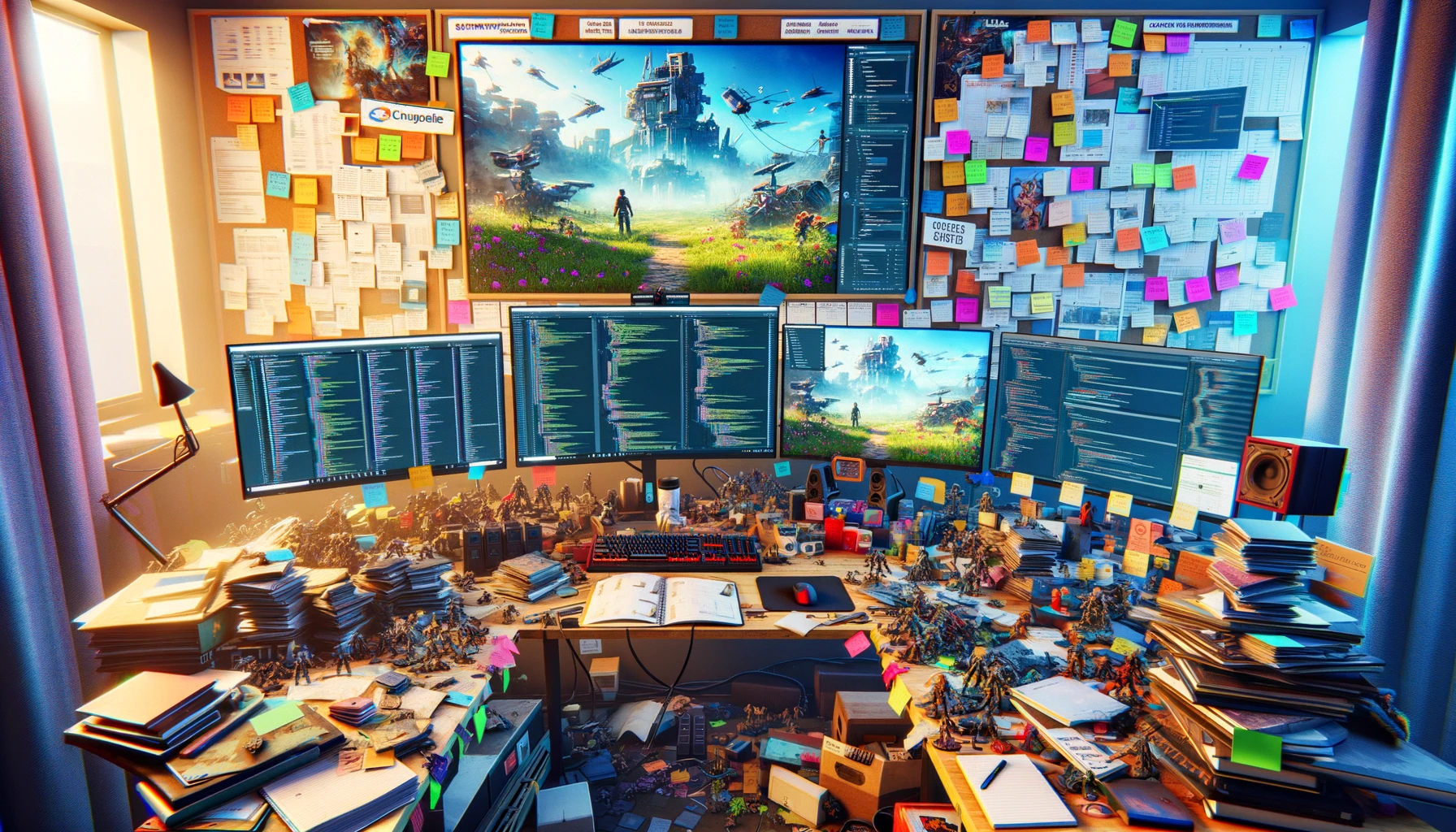Choosing Godot 4.2 as the game engine for developing “Chronosynclastic Infundibulum” is a great decision, especially for a project that involves complex time manipulation mechanics and rich visual storytelling. Here’s why Godot 4.2 is a suitable choice and how you can leverage its features:
Advantages of Godot 4.2:
- Open Source and Free: Godot is completely open-source and free, which means you can use and modify it without any licensing fees. This is particularly beneficial for indie developers or smaller studios.
- Flexible Scripting Options: Godot supports GDScript, a Python-like scripting language designed specifically for game development. It’s easy to learn and powerful enough for complex game logic and mechanics. Godot also supports VisualScript, a node-based programming language, and C#, offering multiple options depending on your team’s expertise.
- Robust 2D and 3D Engine: With a dedicated 2D engine and an improved 3D engine in version 4.2, Godot is well-equipped to handle the stylized semi-realistic art style and the dynamic environments of Chronopolis.
- Animation and Timeline Features: Godot’s animation system is versatile, allowing for intricate animations and timeline manipulations. This can be crucial for implementing the various time-related effects and gameplay mechanics in your game.
- Built-in Physics and Particle Systems: For creating realistic environmental interactions and visual effects, Godot provides robust physics and particle systems, which can enhance both the gameplay mechanics and the visual appeal of time manipulation.
- VR Support: If you plan to explore VR aspects later, Godot supports VR development, which could add an immersive layer to the time manipulation experiences.
Utilizing Godot 4.2 for “Chronosynclastic Infundibulum”:
- Time Manipulation Mechanics: Use Godot’s animation tools and shaders to create visual effects for time rewinding, pausing, and fast-forwarding. Implement game logic using GDScript to control how these time manipulations affect both the game world and the gameplay.
- Dynamic Music and Sound: Leverage Godot’s audio engine to implement the dynamic music system and spatial sound effects, enhancing the immersive experience of the game’s unique settings and time states.
- Efficient Workflow: Take advantage of Godot’s scene and node system to organize the game’s complex world into manageable parts. This system makes it easier to handle the large variety of environments and interactions in Chronopolis.
- Community and Resources: Utilize the active Godot community for support and resources. The community is a great place to find plugins, tutorials, and advice that can help solve specific challenges you might face during development.
Next Steps:
- Prototype Early: Start by prototyping the core mechanics of time manipulation to test and refine these elements before full-scale development.
- Iterative Development: Use Godot’s scene system to iteratively develop and test parts of the game, ensuring each element works smoothly before integrating into the larger game structure.
- Documentation and Version Control: Make full use of Godot’s documentation and integrate with a version control system like Git to manage the development process effectively, especially when working in teams.
Godot 4.2 will provide the tools and flexibility needed to bring the ambitious vision of “Chronosynclastic Infundibulum” to life, combining detailed storytelling with innovative gameplay within a robust development environment. Would you like to explore specific features of Godot 4.2 or need guidance on setting up your development environment?
